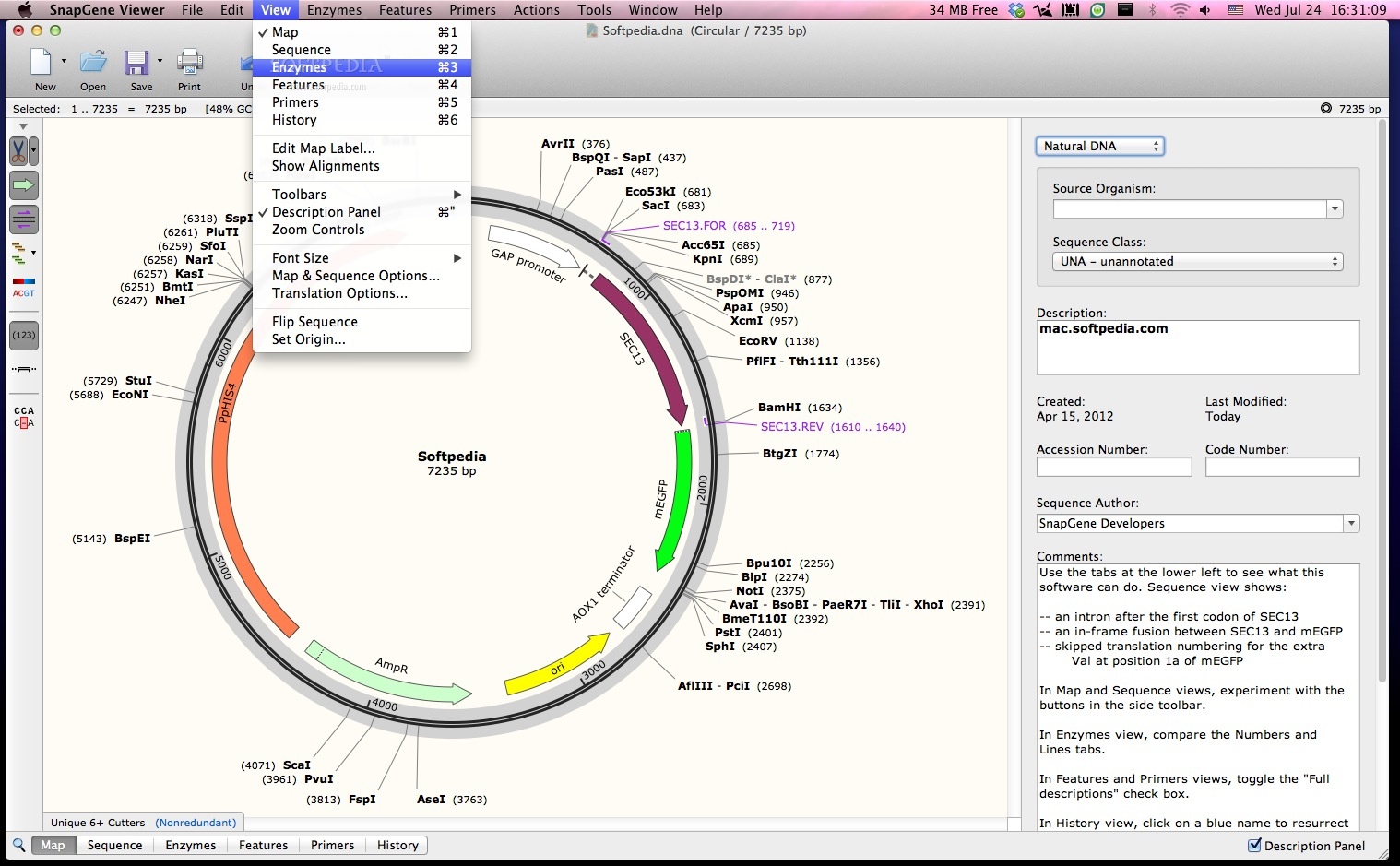

- Align multiple sequences in snapgene viewer how to#
- Align multiple sequences in snapgene viewer software#
A matched pair of FASTA and QUAL files are often used as an alternative to a single FASTQ file. Qual files are a bit like FASTA files but instead of the sequence, record space separated integer sequencing values as PHRED quality scores.
Align multiple sequences in snapgene viewer software#
For example, this is used by Aligent's eArray software when saving microarray probes in a minimal tab delimited text file. Simple two column tab separated sequence files, where each line holds a record's identifier and sequence. The Stockholm alignment format is also known as PFAM format. Standard Flowgram Format applying the trimming listed in the file. Standard Flowgram Format (SFF) files produced by 454 sequencing. Truncates names at 10 characters.Ī FASTA like' format introduced by the National Biomedical Research Foundation (NBRF) for the Protein Information Resource (PIR) database, now part of UniProt. PHD files are output from PHRED, used by PHRAP and CONSED for input.Īn alignment format. Uses Bio.PDB to determine the (partial) protein sequence as it appears in the structure based on the atom coordinate section of the file (requires NumPy). Reads a Protein Data Bank (PDB) file to determine the complete protein sequence as it appears in the header (no dependency on Bio.PDB and NumPy). The NEXUS multiple alignment format, also known as PAUP format. This refers to the IMGT variant of the EMBL plain text file format. This refers to the IntelliGenetics file format, apparently the same as the MASE alignment format. The GenBank or GenPept flat file format (alias for genbank). The native format used by Gene Construction Kit. See also the incompatible 'fastq-solexa' and 'fastq-illumina' variants. In Biopython, 'fastq-sanger' refers to Sanger style FASTQ files which encode PHRED qualities using an ASCII offset of 33. See also the incompatible 'fastq-solexa' and 'fastq-illumina' variants.įASTQ files are a bit like FASTA files but also include sequencing qualities. In Biopython, 'fastq' refers to Sanger style FASTQ files which encode PHRED qualities using an ASCII offset of 33. Resulting sequences have a generic alphabet by default.įASTA format variant with no line wrapping and exactly two lines per record.įASTQ files are a bit like FASTA files but also include sequencing qualities. This refers to the input FASTA file format introduced for Bill Pearson's FASTA tool, where each record starts with a '>' line. The alignment format of Clustal X and Clustal W. Reads a macromolecular Crystallographic Information File (mmCIF) file to determine the complete protein sequence as defined by the _pdbx_poly_seq_scheme records. Uses to determine the (partial) protein sequence as it appears in the structure based on the atomic coordinates. Uses internally clustal The alignment format of Clustal X and Clustal W. Reads the contig sequences from an ACE assembly file.

Same as "abi" but with quality trimming with Mott's algorithm. Note each ABI file contains one and only one sequence (so there is no point in indexing the file). Reads the ABI "Sanger" capillary sequence traces files, including the PHRED quality scores for the base calls.
Align multiple sequences in snapgene viewer how to#
To learn more on how to convert files on your desktop, pick pair of formats above and


 0 kommentar(er)
0 kommentar(er)
